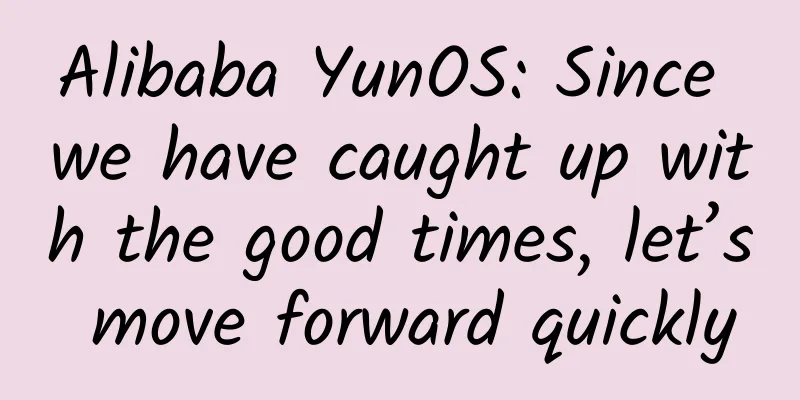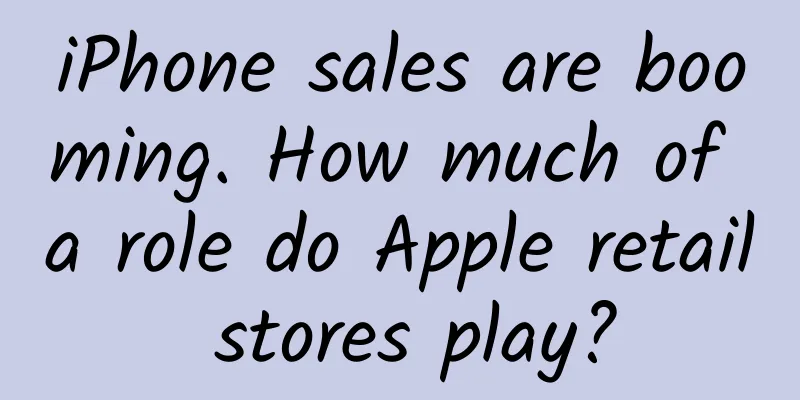Alibaba YunOS: Since we have caught up with the good times, let’s move forward quickly

|
When I saw the words “The first Alibaba Cloud OS user in July 2011” displayed on the big screen at the press conference, I subconsciously thought, “Isn’t that me?” - Then this enthusiastic user was called to the stage by the host, and I realized: Oh, it’s not me after all. The first user of Alibaba YunOS was born in July 2011 Of course, this is just a little joke, but it did not prevent me from becoming one of the first users in China to come into contact with the first generation of YunOS and its products. The time was even earlier than July 2011: at that time, I was still in charge of marketing and brand communication at the domestic mobile phone manufacturer Tianyu, and Tianyu W700 was the legendary first mobile phone using Alibaba's YunOS operating system. It took three years to update from 1.0 to 3.0. This iteration speed is by no means fast, but YunOS is not an application, a set of skins, or a set of user interfaces (UI). It is an ecosystem composed of a system bottom layer, an interactive logic, a set of user interfaces, security mechanisms, third-party applications and other complex components, and partners in the industry chain. It involves all aspects, and even the update of the "x.1" version may affect the whole system. I believe that all users who have gone through the 1.0 era can understand that YunOS's achievement of 3.0 is a victory in itself. Alibaba YunOS 3.0 interface The change of version number is perhaps the least important thing in the new version release. On site, we saw Cloud Card service flow, card-style desktop management, significant optimization in security, performance, power consumption and traffic, and we also saw that the once single mobile phone operating system was widely used in tablets, TVs, OTT devices, wearable devices and even cars - perhaps everything in the future will be powered by YunOS. Frankly speaking, this is not the first time I have seen such ambitions from Alibaba. YunOS 1.0 hoped to challenge the giants’ system and application business models, protect fragile user privacy, and enable cloud-based sharing between people. It also proposed for the first time to create a real mobile Internet, rather than moving PCs to mobile phones - that is, intelligence in the cloud. Based on this guiding ideology, YunOS 1.0 proposed "Cloud Apps", which provides a localized application experience for Internet web information, and through lightweight visual communication, allows users to use the card switching mode to seamlessly jump between multiple networked applications. The Cloud Apps interface of Alibaba YunOS 1.0 In 2011, when the 3G era had not really arrived (according to the Ministry of Industry and Information Technology, the 3G penetration rate in 2011 was only 13%), this concept was quite advanced. Since multiple Cloud Apps needed to be online in real time, it would not only cause more traffic consumption, but also continue to consume system resources and power. For example, the first YunOS phone, Tianyu W700, was equipped with the then advanced NVDIA Tegra2 dual-core processor and large-capacity battery, but it still struggled to support the system and Cloud Apps. Therefore, YunOS 1.0 did not really become popular. Many users even flashed the W700, which had a good price-performance ratio, to the Android system. YunOS 1.0 fell silent. Perhaps it was ahead of its time, or perhaps it was born at the wrong time. In 2014, the domestic communication network completed the switch from 2G to 4G at the fastest speed in the world. The core processing evolved from dual-core 1GHz to quad-core 2.5GHz. The Cloud Apps of the YunOS 1.0 era also became the Cloud Card of YunOS 3.0. Although Cloud Card seems to have a lot of origins with the "card-style" Cloud Apps of the 1.0 era, in the context of the significant increase in bandwidth and computing speed, the new Cloud Card has been upgraded from an application form to a service architecture. For example, Zhang Chunhui, the head of the YunOS business unit, who introduced Cloud Card at the scene with the largest length, introduced that Cloud Card will provide a full one-stop service including online and offline, cloud and local around the entire cycle of a user's needs. Such a one-stop service architecture gives third-party service providers (whether online or offline) more opportunities to access Cloud Card and become part of the Alibaba ecosystem. Cloud Card Architecture So the question is, how many existing Cloud Card services are there? The answer is more than 30. It is true that with the Cloud Card architecture, the number of cross-connected applications and services will far exceed this number, but more than 30 is still too few, which is also a problem that the YunOS team needs to focus on solving in the next stage. Fortunately, Alibaba and YunOS 3.0 have caught up with a good era. In addition to the improvement in bandwidth and computing power, users have begun to truly accept, get close to and even embrace the mobile Internet. Various applications and services from Alibaba and not from Alibaba have penetrated into all aspects of users' lives. It can be said that compared with the 1.0 era that metaphysically emphasized "challenge, protection, and opening", the 3.0 era has undergone earth-shaking changes. Cloud Card Operations Next, another important problem that Alibaba YunOS needs to solve is the terminal. I don’t think a design house and a long-marginalized "century-old store" Philips can bring much help, let alone provide strong support for the expansion of the operating system ecosystem. As Zhang Chunhui admitted when talking about the current number of Alibaba YunOS users, "10 million", this is not a big number. It is not a big problem to support product iteration testing, but it will not be easy to increase the number of the more than 30 Cloud Card services mentioned above to 100 or even 1,000 based on 10 million users. Ali YunOS3.0's first product, Philips Aurora i966 “You’ve got to have dreams, what if they come true?” This annual super motivational quote comes from the commemorative T-shirt of Alibaba Group’s IPO in the United States. At the end of the article, this quote is also shared with the still niche Alibaba YunOS. As a winner of Toutiao's Qingyun Plan and Baijiahao's Bai+ Plan, the 2019 Baidu Digital Author of the Year, the Baijiahao's Most Popular Author in the Technology Field, the 2019 Sogou Technology and Culture Author, and the 2021 Baijiahao Quarterly Influential Creator, he has won many awards, including the 2013 Sohu Best Industry Media Person, the 2015 China New Media Entrepreneurship Competition Beijing Third Place, the 2015 Guangmang Experience Award, the 2015 China New Media Entrepreneurship Competition Finals Third Place, and the 2018 Baidu Dynamic Annual Powerful Celebrity. |
<<: The Radio and Television Administration has taken control of Internet TV, so what?
Recommend
Emergency! =͟͟͞Heavy=͟͟Storm=͟͟͞Rain=͟͟! Level 11=͟͟Thunder=͟͟͞Storm=͟͟͞Heavy=͟͟͞Wind=͟͟͞͞! 60 warnings issued! Pay attention to these places
The Central Meteorological Observatory issued a b...
How much does it cost to customize a small program in Guangzhou?
In fact, there are ways to develop WeChat applets...
WeChat this year: 16 emoticons were quietly removed from the platform, and these functions will be gone forever...
In 2020, WeChat launched system emoticons once at...
Thoughts on e-commerce user growth
The quantitative target of user growth products i...
Bigger than a black hole is the geography teacher's imagination
Loading long image... Source: National Geographic...
How to choose a TV at this stage? Don’t buy 4K, 1080p is the best
It's the TV buying season again, and the &quo...
YouTube reveals: 5-second ads earn more than 120-second ads
Last weekend, I opened an app and was about to wa...
Can silk be artificially produced?
Produced by: Science Popularization China Author:...
Learn from comics: Detailed explanation of the 4 key factors for getting Apple recommendations
As the competition in the mobile game market beco...
A new species 150 million years old has been discovered! The "Zhenghe version of Jurassic World" is here
China is the country with the richest dinosaur sp...
B2B social media marketing strategy tips!
In this article, I highlight some of his findings...
I have learned the 8 major factors that affect SEM traffic. If there is no effect, I lose!
Introduction: The most basic factor that determin...
Master super search skills from scratch in 21 days
Gifted Mission-How to Live a Powerful and Free Li...
Mobile APP and game promotion, why can’t we achieve significant results even though we have a budget?
Many people may not understand that in operations...
After 35 years, Chernobyl's underground material has rekindled. Is it going to explode again?
Nuclear power is a technology that makes nuclear ...









